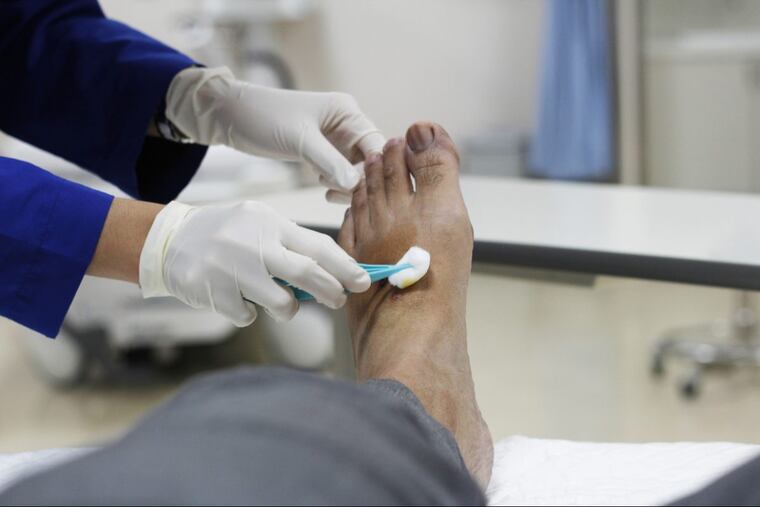Foot ulcers are among the most dangerous complications of diabetes. Here's how to prevent them.
While diabetes is becoming more familiar to many, the same does not hold true for its complications.

Across the United States, an estimated 30 million people — more than 9 percent of the population — have diabetes. Of those, 7.2 million are unaware they are living with the disease. The proportion of adults with diabetes increases with age, reaching a high of 25.2 percent among those ages 65 and older. In addition to age, risk factors for diabetes include poor diet, low activity level, obesity and heredity.
While diabetes is becoming more familiar to many, the same does not hold true for its complications. Not everyone is aware that diabetic foot ulcers are a common problem for patients with the disease. Diabetic foot ulcers can be one of the more persistent and dangerous consequences of diabetes. However, they can also be one of the most avoidable complications.
Diabetic foot ulcers are a type of open sore that does not heal in a timely manner. On average, diabetic foot ulcers last 12 to 13 months and recur in more than half of patients, leading to loss of function and a decrease in quality of life. Chronic wounds such as these present a challenge to patients and healthcare professionals alike because of the high cost and intensity of care needed for treatment.
Anyone with diabetes can develop a diabetic foot ulcer; however, those whose diabetes is out of control are at a higher risk. High blood sugar levels, poor circulation, immune system issues, nerve damage, and infection can also contribute to a non-healing diabetic foot ulcer.
Approximately 15 percent of people living with diabetes will develop a foot ulcer, and an estimated 14 to 24 percent of patients with foot ulcers will experience an amputation. But these amputations are preventable.
The Center for Wound Healing and Hyperbaric Medicine at Nazareth Hospital recommends taking the following steps to prevent diabetic foot ulcers:
Stop smoking immediately, if applicable.
Schedule comprehensive foot examinations with your healthcare provider at least four times per year.
Conduct daily self-inspections of your feet. Or, if you need help, ask a family member.
Take regular care of your feet, including having a healthcare professional cut your toenails and take care of corns and calluses.
Wear supportive, proper footwear and always wear socks.
Take steps to improve circulation, such as eating healthier and exercising on a regular basis.
If a diabetic foot ulcer does develop, the key to treatment is early detection. If you suspect you have a problem wound, visit an advanced wound healing center where physicians and nurses can begin treatment as quickly as possible. This will reduce your risk of infection and amputation.
By taking better care of your feet—and acting as soon as ulcers occur—you can drastically improve your mobility and quality of life.
Steven Wilbraham, MD, is the Medical Director for the Center for Wound Healing and Hyperbaric Medicine at Nazareth Hospital.